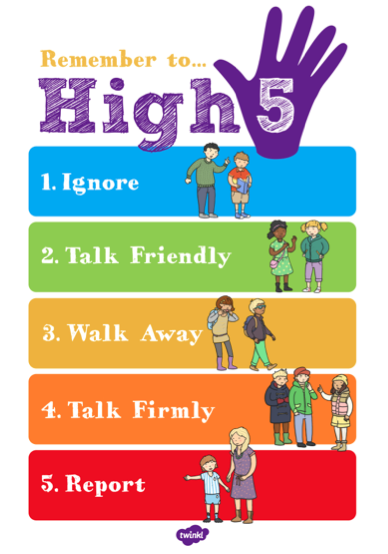Anti-Bullying
Please see the attached document at the bottom of this page for our full anti-bullying strategy, including advice about what to do if you are worried your child is being bullied.
At Easton Royal Academy, we have a structured response to bullying which we call "The Anti-Bullying Pathway". This can be found at the end of our bullying prevention document and sets out what families and children can expect of us in a bullying situation.
Aside from a really robust anti-bullying pathway, which helps us respond when bullying does occur, we have made the following actions part of everyday practice in our school to help to prevent bullying occuring in the first place:
We create a culture where prejudice is not accepted
Accordion cBullying can be fuelled by prejudice. We work hard to create a culture where prejudice and hatred are not accepted and we do this through our every-day teaching, communication and general curriculum; through school displays and assemblies that promote understanding of diversity through regular news stories and their link to our core values; through the texts and resources that we share with the children and through our PSHE curriculum.
We challenge comments or actions that are homophobic, transphobic, racist, sexist or disablist
We actively challenge comments, actions or ideas that are homophobic, transphobic, racist, sexist and disablist. Children understand these terms at an age-appropriate level. We have thought carefully about language and this can be seen in more detail in our equalities policy.
We teach children about bullying and how to take action
We teach children about different kinds of bullying, reasons why bullies might behave in way they do and what they can do to stop it. We actively promote gender equality through assemblies, texts, teaching and in day to day discussion with children.
We have a 'High 5' strategy, which empowers children to resolve conflict

We teach children how to cope with conflict through assertive behaviour strategies, linked to our ‘High 5s’ strategy. This includes an emphasis on how to report issues when they are serious or repeated.
We have trained peer-mediators (our 'Buddy Crew')
We have 10 children in school who are trained as part of ‘The Buddy Crew’. Their training involves understanding how to spot and report bullying and well as how to avoid being a bystander.
We have Worry Monsters in every classroom
We have a ‘worry monster’ in each classroom to help children report issues in writing if they are worried to do it in person.
We conduct whole-team 'pupil checks'
We meet as a staff team to discuss specific areas of conflict for children in our classes and how we will respond. We meet regularly as a full team to conduct a thorough 'pupil check' where we look at assessment data, attendance, behaviour, general wellbeing and safeguarding for every pupil on our school roll.
We complete an annual audit of anti-bullying practices
We carry out an annual audit of our anti-bullying practices with our governing body. We have a clear bullying prevention pathway (attached). We log incidents of bullying digitally, linking incidents into chronologies and looking at them alongside other data on attendance, safeguarding, behaviour and safeguarding.
We collect and report data on bullying in our school
We report incidences of bullying to the governing body 3 times a year and we have to account for how we have responded to these.
We regularly talk to children about their experiences of school
Our governors, leaders and senior leaders from the trust conduct regular pupil voice sessions and create written reports and recommendations.

